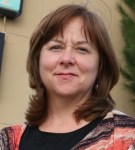
Hello STEM Tuesday enthusiasts!
We know you are all anticipating our first post for next week. Our topic this month is ZOOLOGY! We have some fabulous books that we are highlighting. It will be SO exciting!
See last week’s post HERE for all the details if you missed it.
But since it’s difficult to wait, we thought we’d get you all in the STEM mood by offering some great book giveaways, generously given by our very own authors on the STEM Tuesdays team.
If you want to enter to win, simply write a comment below telling us why you think STEM ROCKS! or maybe a STEM topic you would like to see covered, a STEM book that you really love, or maybe just give us a thumbs up because you are a STEM enthusiast, too.
Enough talk, let’s get to the PRIZES :
Multiple winners! Each one wins ONE of these amazing books!!

by Nancy Castaldo 
Beastly Brains (HMH BFYR) In Beastly Brains, Castaldo delves into the minds of animals and explores animal empathy, communication, tool use, and social societies through interviews and historical anecdotes. Researchers from Charles Darwin to Jane Goodall have spent years analyzing the minds of animals, and today’s science is revolutionizing old theories and uncovering surprising similarities to our own minds. Humans are not alone in our ability to think about ourselves, make plans, help each other, or even participate in deception. You’ll think differently about the animals on this planet—maybe it’s their world and we’re just living in it!
 by Mary Kay Carson
by Mary Kay Carson 
The Bat Scientists (HMH BFYR) Dr. Merlin Tuttle and his colleagues at Bat Conservation International aren’t scared of bats. These bat crusaders are fascinated by them, with good reason. Bats fly the night skies in nearly every part of the world, but they are the least studied of all mammals. As the major predator of night-flying insects, bats eat many pests. Unfortunately bats are facing many problems, including a terrifying new disease. White-nose Syndrome is infecting and killing millions of hibernating bats in North America. But Dr. Tuttle, with the help of his fellow bat scientists are in the trenches—and caves—on the front line of the fight to save their beloved bats.
 by Amber J. Keyser
by Amber J. Keyser 
Anatomy of a Pandemic (Capstone Press) Sickness is a fact of everyday life. But when sickness spreads from person to person rapidly, a deadly pandemic could result. Find out the causes behind major pandemics of history such as the Spanish flu and the Bubonic plague. Then go behind the scenes to meet the people who are working hard every day to stop pandemics before they start.
 by Jennifer Swanson
by Jennifer Swanson
Everything Robotics (NGKids) They fix spacecraft, dance, tell jokes, and even clean your carpet! From the tiniest robo-bees to gigantic factory machines, robotics is all around you. This technology isn’t just for science-fiction anymore — it’s real and more relevant than ever. With stunning visuals and energetic, impactful design, readers won’t stop until they’ve learned everything there is to know about robotics.
 by Michelle Houts
by Michelle Houts 
Lucy’s Lab: Nuts About Science (Sky Pony Press) On Lucy’s first day of second grade, she’s excited to meet her new teacher, Miss Flippo, and find out everything’s she’s going to learn about this year in school. And when Miss Flippo tells the class that they’re going to have their very own science lab, complete with lab coats and goggles, Lucy can’t wait to start exploring…Lucy discovers that science is everywhere you look, and a lab can be anywhere you look.
 by Heather Montgomery
by Heather Montgomery 
How Rude! (Scholastic Nonfiction) Some bugs litter. Some pass gas. Some bugs throw their poop! Discover ten of the rudest, crudest bugs around. Full of scientific facts, humor and just the right amount of yuck, How Rude! will make you scream “gross!” Featuring a countdown of the top 10 bad bugs who just won’t mind their manners. One part illustration and one part photography, How Rude! is hilarious, informative, and seriously gross!
 by Carolyn DeCristofano
by Carolyn DeCristofano 
A Black Hole is NOT a Hole (Charlesbridge) What is a black hole? Where do they come from? How were they discovered? Can we visit one? Carolyn Cinami DeCristofano takes readers on a ride through the galaxies (ours, and others), answering these questions and many more about the phenomenon known as a black hole.
Finally, We want to hear from YOU! If you have an idea for a STEM topic of the month, a book that you’d like considered for our lists, have an idea that you’d like us to explore, or just want to drop us a line encouraging us in our endeavors, feel free to email us at stemmuf@gmail.com .






